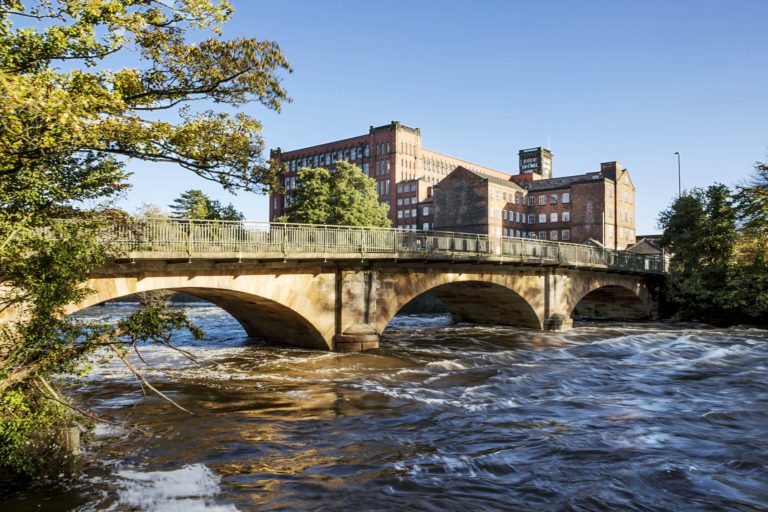“A golden opportunity to provide accommodation, facilities for the town, jobs and goodness knows what else besides.” [Our Belper Mills campaign]
Spaces owned by local authorities could potentially create over 16,000 residential units by converting vacant office spaces, and 3,500 units by converting empty retail spaces. [Habitat for Humanity]
The possibility of turning high street banks into housing – and turning shops and offices into ‘tiny homes’ here in Sidmouth.
.
There is a very important site in Derbyshire, as it was at Belper Mills as part of the Derwent Valley Mills that the world’s second water-powered cotton-spinning mill was built by Jedediah Strutt, following his work with Arkwright at Cromford.
As a commentator to VGS has suggested, “for years they have been proposing but never achieving turning East Mill at Belper into accommodation. It has the potential to be a lovely place to live.”

A year ago, there was a new drive to save the historic Belper Mills after years of problems – but a year on and the council leader was saying the Belper Mills owners had ‘failed’ and show ‘flagrant disregard’ for upkeep of historic complex.
Meanwhile, this week, the resident businesses have been given notice to leave the historic Belper mill – as the developers at East Mill – Belper intend “to convert it into residential, business and leisure use – though a planning decision has yet to be made”.
The Our Belper Mills campaign group says that the first iron-framed building in the world offers “an opportunity: A golden opportunity to provide accommodation, facilities for the town, jobs and goodness knows what else besides.”
This is exactly what is happening elsewhere – as reported in the latest from the ArchDaily in their piece on Maximizing Dilapidated Infrastructure: The Potential of Repurposing Abandoned Buildings into Social Housing:
As the demand for affordable housing grows and the availability of low-cost properties diminishes, stakeholders in housing must become more innovative in their approach to social housing development. One opportunity lies in restoring and repurposing abandoned buildings. While building new houses remains the primary strategy for Housing Authorities and Associations, rehabilitating derelict buildings can be a more economical option. This approach not only maximizes the use of dilapidating infrastructure but also provides an economic opportunity to increase affordable housing within the city. Although rehabilitating derelict residential buildings may seem like an obvious solution, it becomes even more crucial when considering abandoned commercial, institutional, or historical buildings for social housing.
In 2021, Habitat for Humanity conducted a study titled ‘Repurposing Empty Spaces to Prevent Homelessness in Mainland Europe’. Its aim was to explore the possibility and availability of using socially owned vacant spaces to address housing shortages. The United Kingdom was chosen as a pilot study area, where the research found that approximately 7,000 commercial and business premises across England, Scotland, and Wales, currently owned by local authorities, have been vacant for over 12 months. The study estimated that these spaces could potentially create over 16,000 residential units by converting vacant office spaces, and 3,500 units by converting empty retail spaces.
Finally, these pages have looked at the possibility of turning high street banks into housing and turning shops and offices into ‘tiny homes’ here in Sidmouth.
…